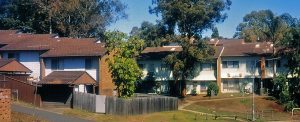
According to a new report, there is currently a shortfall of 433,000 social housing dwellings in Australia.
The Australian Housing and Urban Research Institute report, Social housing as infrastructure: an investment pathway, says 36,000 new social housing dwellings will need to be built every year for the next 20 years to meet future need.
It says social housing needs to treble over the next 20 years through direct investment because 727,300 new units will be needed.
The report was prepared by researchers from RMIT and UNSW Sydney.
Also factored into the 20 year supply target – equating to 36,000 new homes per year – is the newly arising need that will result from expected population growth to 2036.
Forty years ago Australian governments invested to produce 8,000 to 14,000 new public housing units per year.
Construction rates are now minimal.
“In a context where Australian governments have been recently funding only around 3,000 new social housing units per year, we estimate that output of about 15,000 is needed just to stop the existing shortfall from getting even bigger,’’ says report co-author Dr Laurence Troy from UNSW Sydney.
“To fix the current problem as well, over a 20 year period, calls for a ten-fold increase.
[social_quote duplicate=”no” align=”default”]“Lack of affordable and accessible housing is a serious problem for many Australian families.[/social_quote]
“A renewed social housing program should boost output to a level similar to that seen in the early post-war period when state governments were building about one in seven new homes in Australia,’’ he said.
Financial modelling shows the capital grant scenario to be the most cost-effective option, according to the report.
“This strategy also makes effective use of the government backed National Housing Finance Investment Corporation (NHFIC) which provides the longest term lowest cost finance available,’’ says the report’s lead author associate professor Julie Lawson from RMIT University.
“It minimises financing costs and reduces the requirement for deep ongoing operating subsidies.
“Direct public investment costs less in both the medium and long term.
“It also builds the value of assets held by government or regulated non-government providers, creating a basis for leveraging more efficient NHFIC finance into social and affordable housing over the longer term.’’
The full report can be downloaded from the AHURI website at https://www.ahuri.edu.au/research/final-reports/306



